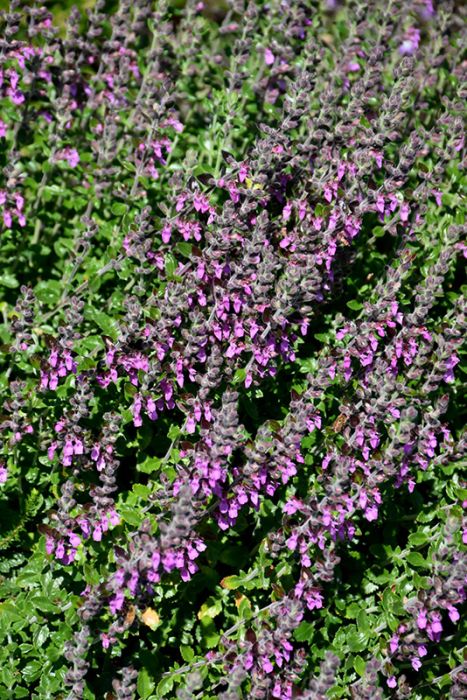Teucrium, Wall Germander



Out of stock
Coming soon, still growing- Sun Preference
- Full-Sun, Part-Sun
- Bloom Time
- July, August, September
Description
Dwarf sub-shrub with immaculate glossy green foliage suitable for a miniature garden hedge. Long lasting short spikes of pink flowers appear in summer through fall, are unparalleled in providing a nectar source for bees!
Minnesota's Largest Selection of Perennials
Discover an unparalleled selection of perennials at Gertens! With the largest variety in Minnesota, we offer endless options of colorful perennials, natives, and pollinator plants to beautify your garden year after year. From vibrant flowers to lush foliage, our perennials are perfect for adding beauty and charm to your outdoor space. Visit Gertens today and see why we're known as Minnesota's Destination Garden Center!
Details
Germander | Teucrium chamaedrys
Height: 14 inches
Spread: 16 inches
Sunlight: full sun to part shade
Hardiness Zone: 4a
Other Names: Germander
Brand: Gertens
Description:
Dwarf sub-shrub with deep, glossy green foliage; Long-lasting spikes of pink flowers in summer; grows best in shady, moist soil
Ornamental Features
Germander features delicate spikes of purple flowers rising above the foliage from mid to late summer. Its glossy narrow leaves remain green in color throughout the year.
Landscape Attributes
Germander is an herbaceous evergreen perennial with a mounded form. Its relatively fine texture sets it apart from other garden plants with less refined foliage.
This is a relatively low maintenance plant, and is best cleaned up in early spring before it resumes active growth for the season. Deer don't particularly care for this plant and will usually leave it alone in favor of tastier treats. It has no significant negative characteristics.
Germander is recommended for the following landscape applications;
- Mass Planting
- Rock/Alpine Gardens
- General Garden Use
- Herb Gardens
Planting & Growing
Germander will grow to be about 14 inches tall at maturity, with a spread of 16 inches. It grows at a medium rate, and under ideal conditions can be expected to live for approximately 10 years. As an evegreen perennial, this plant will typically keep its form and foliage year-round.
This plant does best in full sun to partial shade. It is very adaptable to both dry and moist locations, and should do just fine under typical garden conditions. It is not particular as to soil type or pH. It is somewhat tolerant of urban pollution. Consider applying a thick mulch around the root zone in winter to protect it in exposed locations or colder microclimates. This species is not originally from North America. It can be propagated by division.
More Information
| Common Family Name | Germander |
|---|---|
| Gerten Grown Plants | Gerten Grown Plants |
| Sun Preference | Full-Sun, Part-Sun |
| Bloom Time | July, August, September |
| Mature Spread (Range) | 12" - 24" |
| Mature Height (Range) | 7-12", 13" - 24" |
| USDA Hardiness Zone | 4, 5, 6, 7, 8 |


